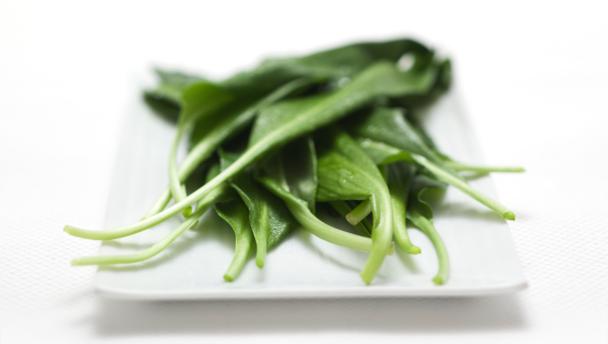

In the UK, wild garlic has many peculiar identities - 'bear's garlic', 'devil's garlic', 'gypsy's onions' and 'stinking Jenny' are just some of them. It's no surprise that this seasonal ingredient is called so many names - it gives off an incredibly pungent smell in the wild. Unlike common cultivated garlic, it's the leaves that are eaten rather than the bulbs. The taste is more delicate too, similar to the flavour of chives.
This is one you're going to find in your deciduous woodland (among the bluebells) rather than the supermarket. It's best harvested in April or May before the flowers appear.
The shape of the leaves are similar to some other inedible plants, so ensure identification by crushing some of the leaves in your hand. The tell-tale odour should ensure you pick the right leaves.
The leaves can be eaten raw or lightly cooked. Be sure to wash them well - some recipes also call for blanching the leaves for a few minutes in boiling water. Wild garlic can be stirred into risottos or omelettes, added to soups or used in sauces to accompany meat and fish.
Type the ingredients you want to use, then click Go. For better results you can use quotation marks around phrases (e.g. "chicken breast"). Alternatively you can search by chef, programme, cuisine, diet, or dish (e.g. Lasagne).